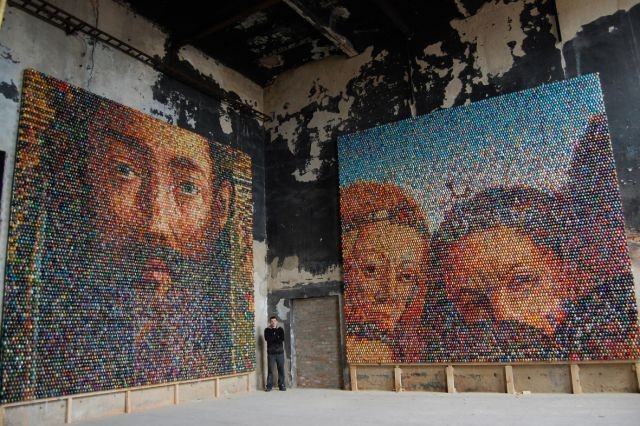Create an account
Welcome! Register for an account
La password verrà inviata via email.
Recupero della password
Recupera la tua password
La password verrà inviata via email.
-
-
- Categorie
- #iorestoacasa
- Agenda
- Archeologia
- Architettura
- Arte antica
- Arte contemporanea
- Arte moderna
- Arti performative
- Attualità
- Bandi e concorsi
- Beni culturali
- Cinema
- Contest
- Danza
- Design
- Diritto
- Eventi
- Fiere e manifestazioni
- Film e serie tv
- Formazione
- Fotografia
- Libri ed editoria
- Mercato
- MIC Ministero della Cultura
- Moda
- Musei
- Musica
- Opening
- Personaggi
- Politica e opinioni
- Street Art
- Teatro
- Viaggi
- Categorie
-
54. Esposizione Internazionale d’Arte la Biennale – Padiglione Ucraina: Oksana Mas – Post vs Proto Renaissance
Installazione di 134 metri x 92 composta da 3.640.000 uova di legno
Comunicato stampa
Segnala l'evento
The installation of Oksana Mas by the title Post-vs-Proto-Renaissance - curated by Achille Bonito Oliva and Oleksiy Rogotchenko – presented at the Biennale di Venezia at the Ukrainian Pavilion in the Church of San Fantin, is the section of a monumental artwork 134 meters long and 92 meters high composed of 3.640.000 wooden eggs. The iconographic reference is the work of the Van Eyck brothers, proto-Renaissance artists who painted The gardens of paradise, for a renowned altarpiece in the Flemish city of Ghent. The eggs form a veritable architecture whose structure evokes a mosaic in which the eggs’ iconographic tattoos constitute the single elements. Ancient and modern art merge into an image embracing stories of sins and dreams of redemption, hope in the future and a yearning for purity. Inside the Church of San Fantin, the installation ideally interacts with the sacredness of its surroundings: depending on the distance, the work breaks down as if it were a digital file of egg-pixels, each one representing the dramatic destiny of mankind. Contemplating the work of Oksana Mas is a form of initiation into a new life, a full life.
Art is the attempt to alleviate a bereavement, the loss of completeness and the descent into an incomplete and fragmentary world. In this regard, creation becomes a development and healing process of the artist who uses form as the crystal-clear evidence of a newfound wholeness. The sphere is the emblem of a circularity that flows and brings together, as shown in the history of art, which has always combined reason with instinct, rationality with spirituality ever since the Middle Ages.
For several years now, Oksana Mas has been working on reclaiming the sphere as a geometric shape holding within itself a principle of universal oneness. The artist starts from the Ukrainian krashenki folk custom: wooden eggs covered in traditional Ukrainian decorations celebrating Easter. In order to realize this grand installation, the artist had thousands of people paint the eggs, incarnation of the sphere: inmates, intellectuals and people from different walks of life from forty-two different countries. She then assembled the painted eggs in her own studio to reconstruct the Ghent altarpiece on a far larger scale.
In addition to the one at the Pavilion at San Fantin, an open-air installation of the artist Oksana Mas will be on display at Campo San Stae for the entire duration of the Biennale.
Oksana Mas was born in 1969 at Ilyichevsk in Ukraine, in the province of Odessa. In 1986 she graduated from her hometown’s art school and in 1992 from the State Art School of Odessa. Without ever putting her artistic activity on hold, in 2003 she obtained a degree in philosophy. She lives and works in Odessa.
04
giugno 2011
54. Esposizione Internazionale d’Arte la Biennale – Padiglione Ucraina: Oksana Mas – Post vs Proto Renaissance
Dal 04 giugno al 27 novembre 2011
arte contemporanea
Location
CHIESA DI SAN FANTIN
Venezia, Campo San Fantin, 1965, (Venezia)
Venezia, Campo San Fantin, 1965, (Venezia)
Orario di apertura
10-19. Lunedì chiuso (apeto il 6 giugno, il 15 agosto e il 21 novembre)
Vernissage
4 Giugno 2011, h 13.30 su invito
Autore
Curatore









